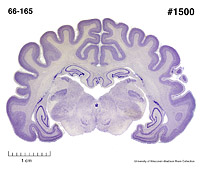|
Domestic
Dog (Basenji)
(Canis familiaris) #66-165 |
||||
|
|
Physical
characteristics and distribution
|
|
The Basenji is a breed of dog and a member of the sighthound family. The Basenji is a Congolese hunting dog that rarely, (if ever) barks, but does have an odd yodelling sound.Basenjis are small, elegant-looking, short-haired dogs with erect ears, tightly curled tail, and graceful neck. Some people equate their appearance to that of a miniature deer. Their forehead is wrinkled, especially when young. Eyes are typically almond shaped, which gives the appearance of squinting with a serious look. Basenjis typically weigh around 20 to 24 pounds (9 to 11 kg) and stand about 17 inches (43 cm) tall at the withers. They are an athletic dog, and are deceptively powerful for their size. They have a graceful, confident gait like a trotting horse, and skim the ground in a "double-suspension gallop" when running flat out at their considerable top speed. The AKC recognizes the following colorations: red/white, black/white, tricolor (red/black/white), and brindle (black stripes on a background of red)/white. There are additional variations, such as the "trindle", which is a tricolor and brindle, and several other colorations that remain in the Democratic Republic of the Congo. Like wild canids, Basenjis don't bark. They will, however, give the occasional single "woof". They will also chortle, whine, squeal, and make a Basenji-specific noise called a yodel or a baroo. Also like wild canids, most Basenjis come into season only once a year, usually in the autumn. The Basenji is one of the most ancient dog breeds. Originating on the continent of Africa, it has been venerated by humans for thousands of years. Basenjis can be seen on steles in the tombs of Egyptian pharaohs, sitting at the feet of their masters, looking just as they do today, with prick ears and tightly curled tail. The Basenji had almost totally disappeared from the West when Europeans came across it in the Congo in 1895. There, the Basenji was prized by locals for its intelligence, courage, speed, and silence. They were assistants to the hunt, chasing wild game into nets for their masters. Several attempts were made to bring the breed to England, but the earliest imports succumbed to disease. It was not until the 1930s that foundation stock was successfully established in England, and thence to the United States. They have been bred worldwide. |
|
Description
of the brain
|
|
Animal
source and preparation
|
|
All
specimens collected followed the same preparation
and histological procedure.
|
Other Related Resources (websites and publications)
List of Specimens | Explore Collections | Brain Sections | Brain Evolution | Brain Development | Brain Circuitry | Brain Functions | Location and Use | Related Web Sites | Contact Us | Search MSU Database | Personnel | Home



